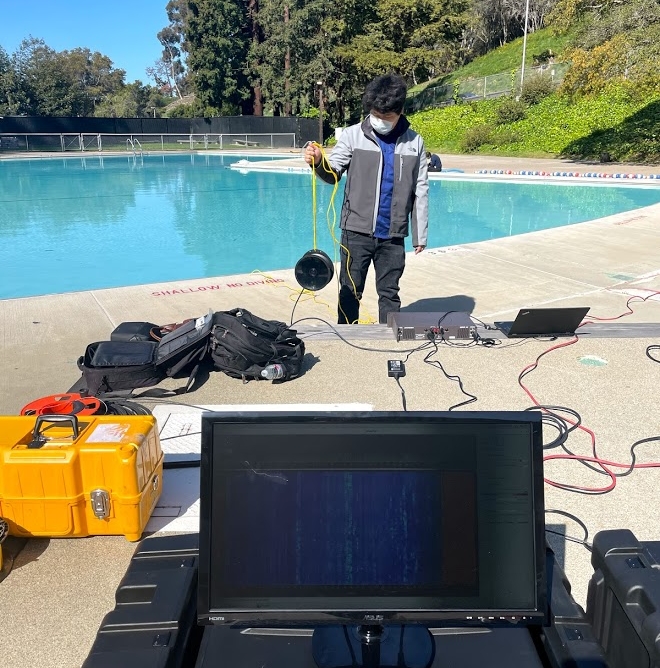Tracking Cetaceans with Fiber
May 21, 2021

The California Energy Commission has invested resources in finding innovative ways to monitor future offshore wind infrastructure and its impacts on the environment. A project led by LBNL is looking at if distributed fiber optic sensing (DFOS), and in particular distributed acoustic sensing (DAS) can be used to both monitor the structural components of these turbines and detect cetaceans that may enter the perimeter of these future offshore wind farms. The concept for cetacean monitoring is shown in Figure 1.

Figure 1. Concept for the use of DAS for the monitoring of marine mammal activity and impacts from floating offshore wind technology development.
As part of that effort, PhD Candidate Peter Hubbard and LBNL scientist Linqing Luo are testing if DAS can be used to detect simple underwater acoustic signals in a controlled environment. As a first proof-of-concept, they tested if DAS can detect whale vocalizations played from an underwater speaker in the Strawberry Canyon Pool on UC Berkeley’s campus. The speaker played a variety of whale vocalizations while SRG’s DAS interrogator (Optasense ODH-4) recorded the signals on several different fiber optic cables submerged in the pool. Figure 2 shows Linqing Luo holding the marine speaker suspended from a rope and the DAS display prior to performing the test at Strawberry Canyon Pool.

Figure 2. Linqing Luo shown with marine speaker at the Strawberry Canyon Pool; Real-time DAS display in the foreground.
Figure 3 shows example spectrograms of both the raw source signal and the signal acquired on a submerged DAS cable. The test was a success, and a full offshore acquisition is planned for late June in Monterey bay in collaboration with Monterey Bay Aquarium Research Institute (MBARI) and Stanford Geophysics Department. During this time humpback whales, Risso’s dolphins and harbor porpoises are expected to be vocalizing in Monterey Bay near the fiber optic sensors.

Figure 3. Spectrograms of (A) the original humpback whale vocalization signal which was played on the marine speaker and (B) the DAS-recorded signal.





